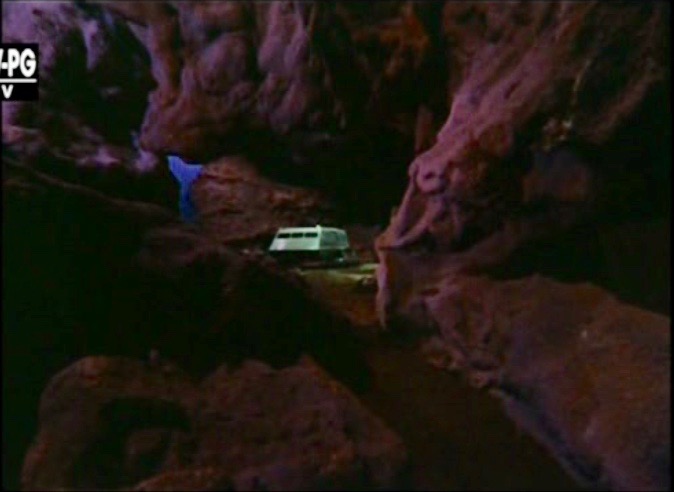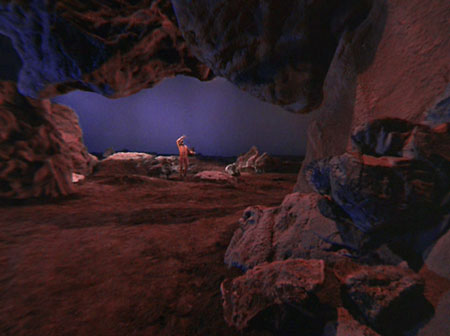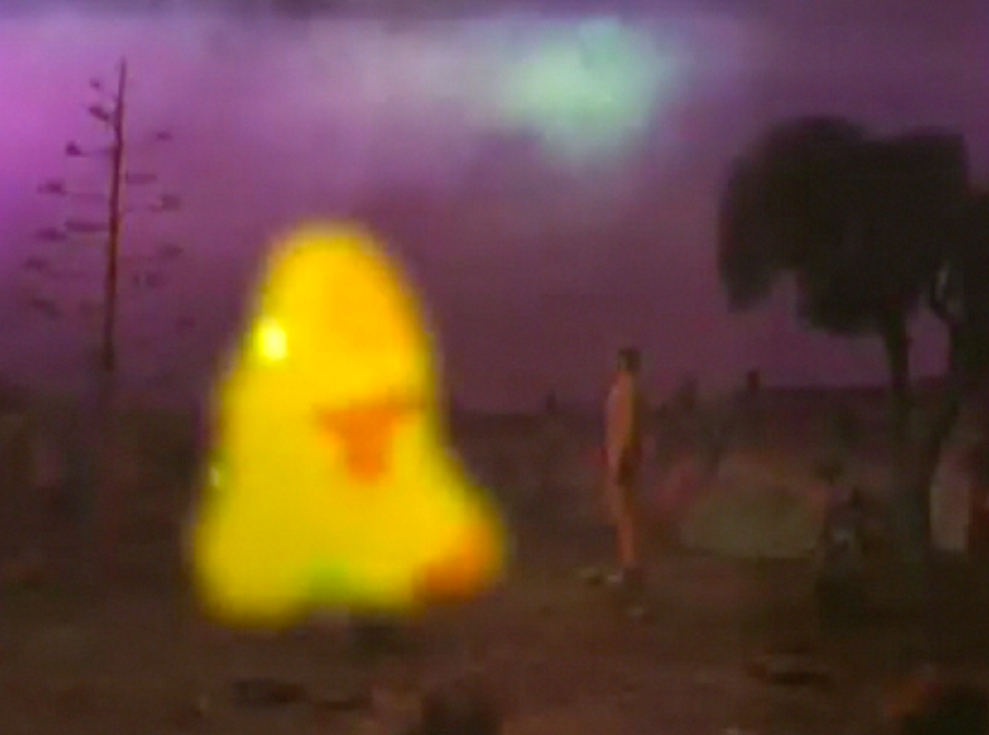mantra: a sacred utterance believed by practitioners to have religious, magical or spiritual powers.
I like the word mantra but my personal interpretation of the word eliminates sacred and religious and substitutes the word and for the word or:
mantra: an utterance believed by practitioners to have magical and spiritual powers
For me a mantra is a simple utterance with far-reaching meaning beyond the words. Here are 6 mantras that were stated to me and have had a profound impact; oddly 5 of them by people with whom I had only a peripheral relationship. Here are the 6.
1
If the action onstage could be frozen when viewing a live stage performance, an audience should still be able to know exactly what is happening. — Myrtle Oulman
Early in 1941 I was a 17-year old senior in high school. Tryouts for the senior class play, SEVEN SISTERS, were announced. I had no obvious theatrical talent, no theatrical ambition., but I tried out and I was not cast. But I wanted to be involved, so I became (and I don’t remember how I managed that) the student assistant to the director, Myrtle Oulman. Miss Oulman was a petite blond who directed all of the plays at the high school in addition to teaching Psychology in the junior college. For the next few weeks I, pencil poised over a thick yellow tablet, sat next to Miss Oulman in the auditorium as she directed, never taking her eyes off the stage. For as long as I can remember, I was a movie fan, and for me this was an introduction to a whole new world.
The following year I enrolled in Mason City Junior College as a freshman. I was determined to continue my new attraction to theatre, so for a small token fee applied to my tuition, I became Miss Oulman’s assistant for ALL of the high school productions that year: the Junior class play, the Senior class play and the All-School play. During that time I learned more about Miss Oulman. She told me that she was a graduate of Yale University with a major in theatre. Sometime during that year as we sat in the auditorium during a rehearsal, she said to me, “If the action onstage could be frozen when viewing a live stage performance, an audience should still be able to know exactly what is happening. ” Those 24 words had a major influence on the 40+ stage productions I directed after graduating from the Pasadena Playhouse School of Theatre and an even greater influence when I began directing film. In film the story should be told visually as well as by the words being spoken. To illustrate here’s a scene from THE NIGHT OF THE DRUID’S BLOOD, an episode of THE WILD WILD WEST (https://senensky.com/the-night-of-the-druids-blood/)
West has been abducted and wakes up in a silo. In this scene there is no dialogue. All you get is what you see.
2
Approach the piano less forcefully, press the instrument keys so as to achieve sounds, not loud but deep, clear, with a rich resonant quality. — Professor Max Dahler
It was September, 1942, I was 19 years old and had enrolled as a music major at Coe College in Cedar Rapids, Iowa. I had also enlisted in their Army ROTC (Reserved Officer Training Corps). I was assigned to Professor Max Dahler for my continued piano studies. I had started taking piano lessons when I was 7 years old. The music teacher for the majority of that time was Ruth Swingen (an apt name for a musician.) Miss Swingen’s approach to the piano was bold and aggressive. Profssor Dahlerl’s technique was the total opposite. He stressed the importance of approaching the instrument less forcefully, of pressing the piano keys so as to achieve sounds, not loud but deep, clear, with a rich resonant quality. For 6 months I strove to understand and adapt to Professor Dahler’s theory as I practiced daily on one of the practice room baby grands. But time ran out. Our ROTC unit was called up into active duty and my ensuing 34 months were involved with World War II. When I exited the army in February, 1946, my career choice had changed. I was headed for the Pasadena Playhouse to begin this trek I have been writing about. But something unforeseen had happened – something I didn’t realize until many years later, like in the spring of 2019 when I wrote the post DANCING AT THE MARATHON AGAIN. (https://senensky.com/special-dancing-marathon/) I knew I had not succeeded at the piano fulfilling Professor Dahler’s mantra, but I finally realized that in my directing throughout the 40 years after the Pasadena Playhouse, that mantra had been a foundation of my work with actors. I relish directing scenes that on the page seem less powerful, less formidable but can ring out onstage and onscreen, not loud but deep, clear, with a rich resonant quality, backed by true emotion and feeling. To illustrate –- a scene from THE ASSASSIN, an episode oF THE FBI (https://senensky.com/the-assassin/)
A hired assassin and a young radical are preparing to assassinate a world famous peace advocate.
3
Great art is a sublimation of limitations. –- Frayne Williams
It was January, 1947. I was a 23-year old student at the Pasadena Playhouse School of Theatre. I had entered the gates of that new world of theatre to which Miss Oulman had introduced me. For the next 18 months I had classes and activities from 8:00 am until my eyes closed from exhaustion – classes in Speech, Dance & Movement, Make-up, Manners and Customs, Music Appreciation and Acting classes with different instructors. The 2nd year there was what I considered the most important class of them all — a directing class taught by Richard O’Connell, the translator into English of the Garcia Lorca plays and like Miss Oulman, a graduate of Yale University’s drama department. He taught the Alexander Dean Fundamentals of Play Directing course he and Miss Oulman had attended at Yale. I graduated in June, 1948, having gained in addition to a wealth of theatre knowledge, another mantra from a white-haired Englishman who taught a 1-hour a week class in Shakespeare: Great art is a sublimation of limitations. I have taken Professor William’s mantra a step further. I’ve stated: Production of Television was a sublimation of limitations. Probably the greatest example of this was the production I directed of METAMORPOHOSIS, an episode of STAR TREK The Original Series (https://senensky.com/metamorphosis/) The whole show except for 3 short episodes on the bridge of the USS Enterprise and 2 short episodes in the Shuttlecraft interior was filmed on Desilu Studlo’s Soundstage 10, possibly the smallest soundstage I ever filmed on.
Filming on Soundstage 10 of 3 planetoid exterior locations and the interior of Cochrane’s house took 5 days of the 6-day shooting schedule. More than half of that time was devoted to the exteriors. First, a large cyclorama denoting the sky and covering almost the entire width of the soundstage was hung by art director Matt Jeffries and lit a vibrant purple by director of photography Jerry Finnerman. To create the wide expanse of the planetoid for the exterior scenes involving the Shuttlecraft, the first of the 3 locations, Finnerman introduced me to the fisheye, the wide-angle 9mm lens. As you can see, although the Shuttlecraft was about 5 or 6 paces from the camera, it looks like it was a football field away. But the fish eye lens was also shooting beyond the top of the cyclorama. To correct that Finnerman brought in rocks to frame the shot.

The Shuttlecraft
In that sequence there was a point of view angle required for the entrance of Cochrane, the marooned astronaut discovered on the planetoid. We filmed an angle to the left of the Shuttlecraft, utilizing the purple cyclorama, the fisheye lens and the required rocks.

Cochrane’s entrance
There were 2 additional sequences to film by the Shuttlecraft, after which the Shuttlecraft was removed and Cochrane’s home with surrounding exterior set dressing was installed.

Cochrane’s home
Except for the later “scarf” scene, the rest of the exterior sequences were filmed in the area of the house.
When all of the shots in the sequences facing the house were completed, the house and set dressing were removed and Matt Jeffries dressed that space to be the area looking away from the house, where Cochrane summoned and communicated with the Companion. Finnerman lit the area, adding clouds which he did with a bee smoker.

Cochrane and the Companion
4
True acting is being, not seeming. – Beulah Bondi
It was early in 1957. I was directing my 4th Off-Vine Street play at the Horseshoe Stage on Melrose Avenue. The play was THE IMMORALIST, a stage adaptation of Andre Gide’s novel. I cast Judith Ames (real name Rachel Foulger, but working professionally under the name Paramount Studio had bestowed upon her) in the role played on Broadway by Geraldine Page. (Rachel later compromised and used the professional name Rachel Ames). Rachel’s mother, the wonderful character actress, Dorothy Adams, brought her friend, Beulah Bondi, to see the production. I did not know in advance that she was doing that and I was disappointed that I didn’t get to meet her. Afterward I asked Doro (as I came to know her) if it would be possible for me to call Miss Bondi. Doro checked, said it would be okay and gave me Bondi’s telephone number. I called Miss Bondi and what I remember most positively about our conversation was her saying, “True acting is being, not seeming.” At this point my knowledge of the craft of acting was pretty much based on: 1) observing Miss Oulman directing high school students, 2) an early student assemblage in the Pasadena Playhouse main theatre when Gilmore Brown told of his recent visit to New York City and he raved about Ingrid Bergman’s performance in JOAN OF LORRAINE and told how impressed he had been with how Bergman listened, 3) later learning that when Mr. Brown critiqued a performer in rehearsal he would say, “I don’t believe you” and 4) acting classes with various members of the staff, none of them noteworthy. It seemed I still had some learning about the craft of acting ahead of me.
You’ve read what Bondi said about acting. Now let’s watch her illustrate her words in the final scenes of THE CONFLICT, an episode of THE WATONS . https://senensky.com/the-conflict-part-i/
Martha Corinne Walton, the wife of Grandpa Walton’s deceased older brother, has been notified she must leave her mountain home where a National Park is scheduled to be created. Her refusal to leave has resulted in the arrival of a government force, an armed standoff, John Boy being wounded and word arriving of the Governor’s final decision on her appeal.
5
You play yourself in the imaginary circumstances. –Sanford Meisner
Near the end of 1955 I was employed at CBS, starting as a typist in the mimeo department of CBS Radio. By the summer of 1959 I was one of the alternating production supervisors on the weekly CBS television production of PLAYHUSE 90.
1959 was the 2nd summer that Sanford Meisner came to Los Angeles from New York to conduct some 6-week seminars on acting. Meisner had been a member in the early 1930’s of The Group Theatre and after that an esteemed teacher of acting at the Neighborhood Playhouse School of the Theatre. Several other members of the Group Theatre had also become acting teachers, each espousing his (or her) approach to the system of acting developed earlier in Russia by Konstantin Stanislavski. I think the most famous was the method taught by Lee Strasberg at the Actors Studio. The Meisner Technique differed. He abandoned the use of affective memory and stressed that “acting is doing” and “to live truthfully under given imaginary circumstances.”
In Los Angeles there would be 4 classes, each would meet for 2 three-hour sessions a week, an afternoon class (12:00-3:00) and an evening class (7:00-10:00). I found out it was possible to attend as an observer, so I enrolled. I was by then an alternating production supervisor on PLAYHOUSE 90 and since the show was airing summer reruns, my duties were minimal, mainly taking care of the commercials. The location Meisner had chosen to conduct the classes was only a10-minute ride from CBS Studio City, so for 6 weeks I attended the afternoon classes by taking a 3-hour lunch break. During the 6-week period I attended all 144 hours of Meisner’s classes. For me it was a master class on the art of acting.
As director I cannot tell the actor to play himself or herself. Each actor has his or her technique. But I believe it is the responsibility of the director in staging and filming to create the circumstances of the sequences visually, not imaginary. To illustrate here is a scene from THE FIRE STORM, an episode of THE WALTONS, (https://senensky.com/the-fire-storm/).
There has been an adverse reaction from the community to John Boy’s announcing he will be publishing in his newspaper excerpts from Hitler’s MEIN KAMPF. A stone was thrown through a window of the Walton home. John Boy was censured by the minister in a Sunday sermon! Here’s the final scene, the end of the community annual picnic festivities!
6
Move the actor, not the camera. – John Ford
It was early October, 1961, I was on the backlot of MGM with Charles Hagedon, the art director for the television series DR. KILDARE and we were selecting the locations I would be filming on the 5th day of JOHNNY TEMPLE, the 1st film I would finally be directing. Charles, a veteran in the movie industry, had some advice for me. He told me, “Remember the words of John Ford: Move the actor, not the camera,” a simple, very meaningful instruction that brings me to the end of this mini-Mantra I’ve been waging.
So let me illustrate this last mantra with a scene from SHADOW OF A STARLESS NIGHT, an episode of BREAKING POINT, a brilliant series the network chose to cancel at the end of its first season. (https://senensky.com/shadow-of-a-starless-night/)
A young successful doctor has been blinded in an automobile accident. His wife is bringing him home after his long recovery in the hospital.
The journey continues



Your crediting the folks from so long ago was very nice. I enjoyed your look back and once again thank you for the insights here.
You directed my mother, Ruth Scott, in “Mornings at Seven”, at Equity Library Theatre West. I always enjoyed, and learned a great deal, watching you work . I believe you also directed her in ” Separate Tables”, and then there were some Kildares as well. You brought out the best performances in the actors and actresses. Thank you for imparting so much wisdom in the art of directing and stagecraft.
I remember Ruth so well. MORNING’S AT SEVEN was one of the joys of my work. I didn’t direct her in SEPARATE TABLES since I never directed a production of that play.
Tonight I watched two of your Insight episodes. The Whole Damn Human Race and One More with Jack Albertson and a young Barbara Hershey. I forgot it was shot in black and white in 1970. I recall this being shown in high school theology class in about 1972.
Also enjoyed Welcome Home with one of my favorite actors, Robert Hogan.
As I stated previously the Insight series was great and remember it five decades later. Thank you.